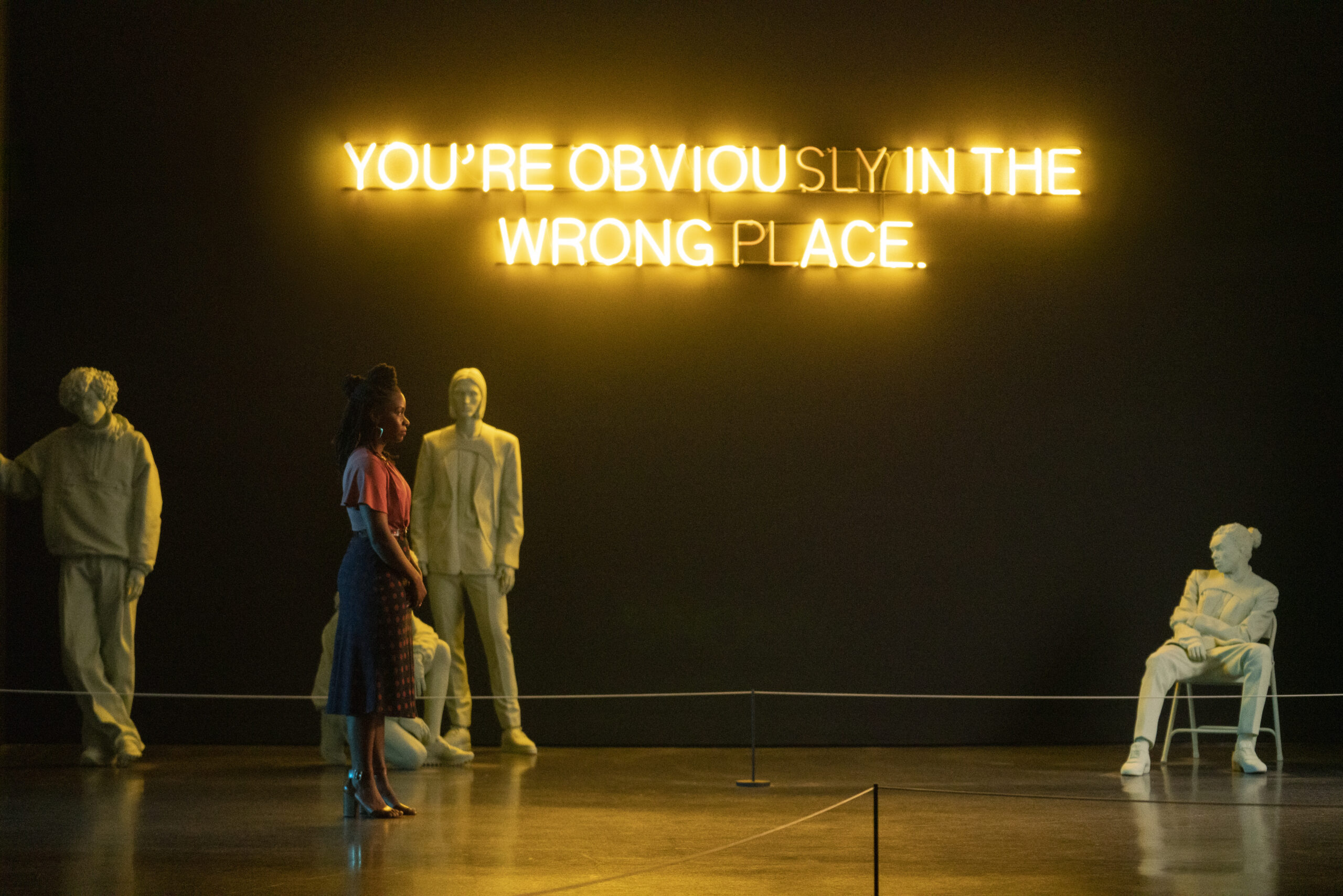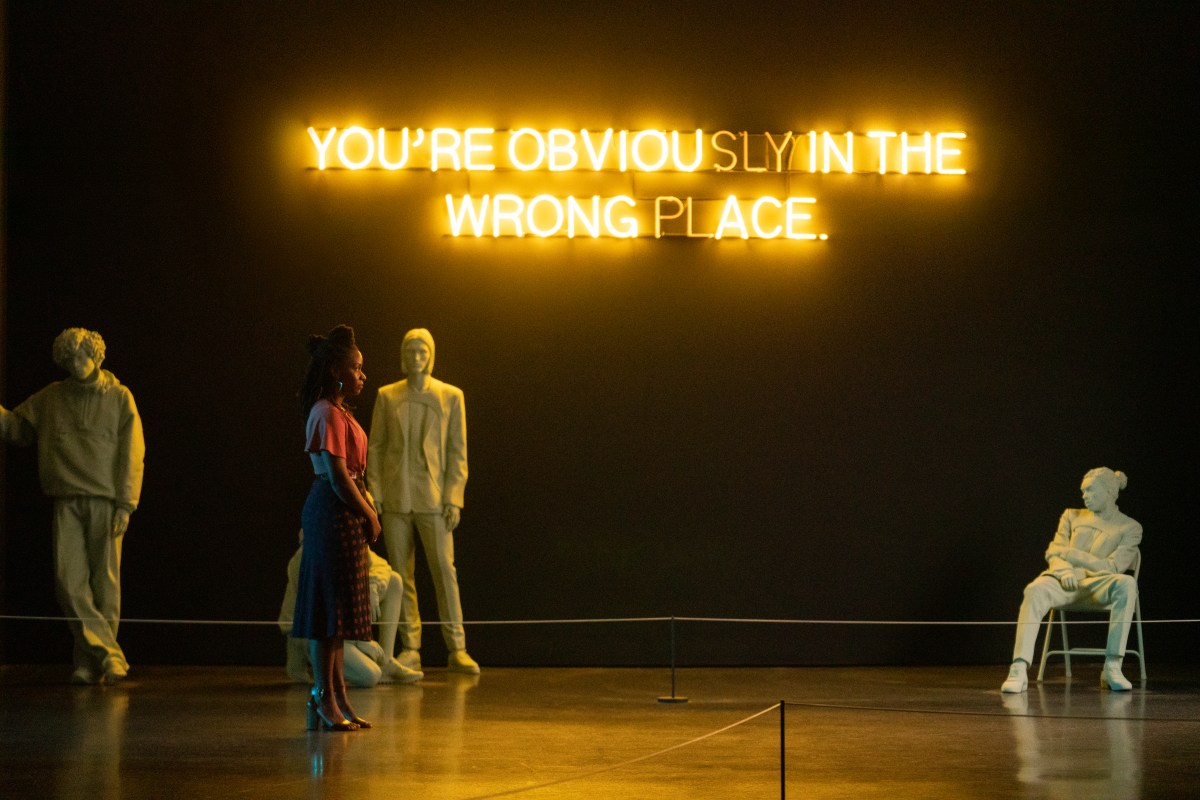Watching Nia DaCosta’s Candyman as a Black Woman Who Grew up With the Original Created a New Sense of Horror I Wasn’t Expecting
Say his name


Spoilers for Candyman 2021
So I took a deep breath and watched Nia DaCosta’s Candyman, fully expecting to have trouble sleeping—especially since I’m no stranger to the 2 AM bathroom trip where all the lights are off as you walk past the mirrors in your house.
I also expected to have a lot of feelings about the social commentary that I knew the film would touch on. Candyman has always been a film with something to say in that regard and the creatives behind this 2021 release haven’t been shy about the social commentary at work here.
In a lot of ways, my expectations were met. The movie is full of uncomfortable moments that make you paranoid about reflective surfaces. The kills are creatively shot to fit with the artistic theme of the film. And the social commentary is present and accounted for, with characters discussing the gentrification of Cabrini-Green and the racial injustices toward the Black community.
That being said, all of this hit me in a way I wasn’t expecting, one that I think is similar to how my mother and I have conversations about race. That’s because when we talk about the ongoing discrimination we face, there’s a very exhausted tone of realizing that racism is being played on a loop—there’s just a different name for the hashtag, a new title for “entitled white person throwing a tantrum,” and “this space swears it’s gonna do better but it said that last year, and the year before, and the year before…”
As someone who was a child when the 1992 Candyman was released, watching the 2021 Candyman with a far better understanding of racism is a level of horrific I hadn’t anticipated.
Back in 1992, I was a 9-year-old girl who didn’t have that strong of a grasp of the injustices against us. It’s not like I didn’t know what racism was, but it was a pretty standard “white employee following you around the store” or “n-word painted on your locker” viewpoint.
The nuance of the layers of racism wasn’t there for me.
Yet.
Now, in 2021? That view has evolved because it’s had to evolve, and the fact that it’s still an ongoing struggle hit me harder than Candyman’s hook hand in the middle of the night.
Basically, I grew up, and racism did, too.
Previously, I predicted, after the release of the second trailer, that the quote about Candyman being the whole damn hive would come into play.
I can’t help but think that switching Candyman’s tormentors from slave owners to police officers is very poignant. It also fits with the way urban legends work. The story can change as it’s passed through generations, and with our lead character, Anthony McCoy (played by Yahya Abdul-Mateen II), being the grown-up version of the baby Candyman kidnapped in the 1992 movie, I think the origin story has shifted to reflect one of the biggest fears Black people face today: police brutality.
This also lines up with the part in the trailer where we’re told that Candyman ain’t a he, Candyman’s the whole damn hive. Candyman isn’t just a slave murdered by a racist white mob, he’s the embodiment of the things that continue to harm the Black community, hence the progression of murdered by slave owners to murdered by cops.
I was mostly right about this, the only difference is that DaCosta did not switch who Candyman’s tormentors are, she simply added to the ongoing narrative.
Candyman is, in fact, the whole damn hive, a symbol for the oppression the Black community faces and, in a way, a coping mechanism for that terrifying level of injustice. The original Candyman is just one example of the violence against us with the 2021 incarnation being another part of the hive.
This runs parallel to the real-life horrors of racism. While we’re no longer in the 1800s with slave owners getting together to kill a man, we are in a time full of police brutality, screaming Karens, and other aggressions (micro and beyond) that affect us. At the end of Candyman this time around I found myself coming to terms with the fact that this story is, unfortunately, still relevant today. Much like racism itself, we’ve had to adjust the conversation to address today’s issues, and really, today’s issues are just an offshoot of what our ancestors were going through before.
Even worse? It’s treated (by some) as something that has come to an end because “it’s not as bad as it used to be.” People have forgotten that the horror is still buzzing through the streets, so Candyman is there to serve as a reminder.
Have we made progress? Sure.
Is racism dead? Well, say Candyman five times in the mirror to find out—if you dare.
The trauma from this Candyman mirrors the commentary from its predecessor, creating a narrative where the true horror lies in the fact that these plot beats are not only relevant, but timeless.
(image: © 2020 Universal Pictures and MGM Pictures)
Want more stories like this? Become a subscriber and support the site!
—The Mary Sue has a strict comment policy that forbids, but is not limited to, personal insults toward anyone, hate speech, and trolling.—
Have a tip we should know? [email protected]
